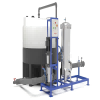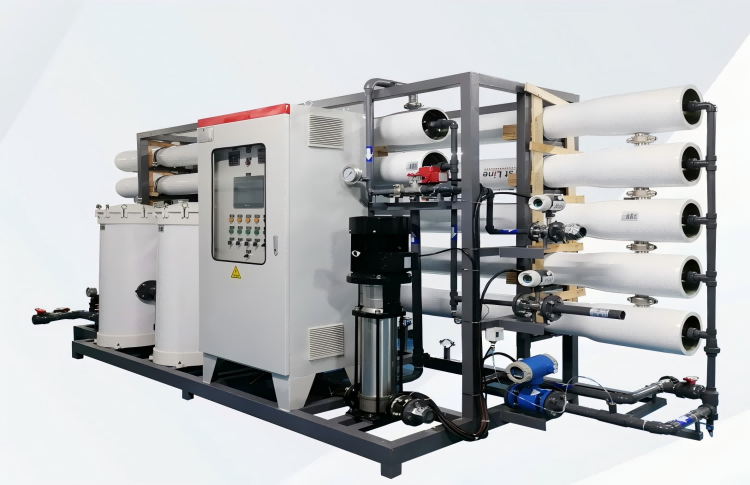Desalination is an important solution in areas where there is a shortage of fresh water. Among the various desalination methods, reverse osmosis (RO) is the most common technology for converting seawater into drinking water. The process relies on semi-permeable membranes to remove salts and other impurities from seawater.
How Does Reverse Osmosis Work in Desalination?
- Seawater intake: Seawater is pumped into a desalination plant, where it goes through a filtration process to remove large particles, sand, and debris.
- Pretreatment: The water is then pre-treated to remove smaller particles, microorganisms, and chemicals such as chlorine, which can damage the RO membrane.
- Reverse osmosis process: Pretreated seawater is forced through a semi-permeable membrane under high pressure. The membrane only allows water molecules to pass through, while salts and contaminants are retained, resulting in fresh water.
- Post-treatment: Desalination water is post-treated to adjust pH, add essential minerals, and ensure that the water meets drinking water standards.
Reverse osmosis principle
The basic principle of reverse osmosis is to apply pressure to seawater, forcing water molecules through a membrane while repelling salts and other impurities. This process results in clean drinking water. RO is highly effective, removing up to 99% of salts, bacteria, and other contaminants.

 MBR Membrane
MBR Membrane Reverse Osmosis Membrane
Reverse Osmosis Membrane Residential Ro Membrane
Residential Ro Membrane UF Membrane
UF Membrane Water Treatment Plant
Water Treatment Plant Residential Ro Machine
Residential Ro Machine Brackish Ro System
Brackish Ro System Sea water system/SW RO plant
Sea water system/SW RO plant Membrane Cleaning System(CIP)
Membrane Cleaning System(CIP) Consumables Accessories
Consumables Accessories
